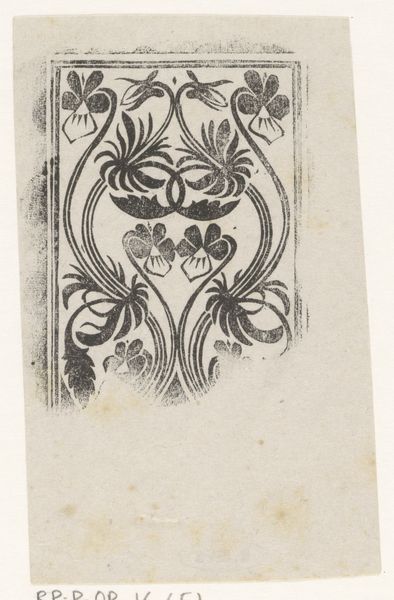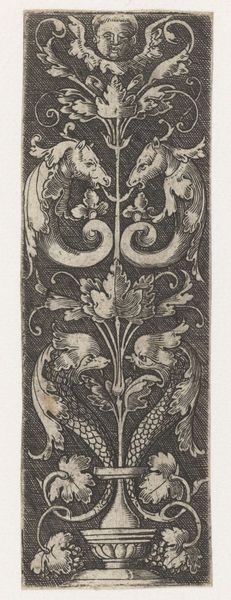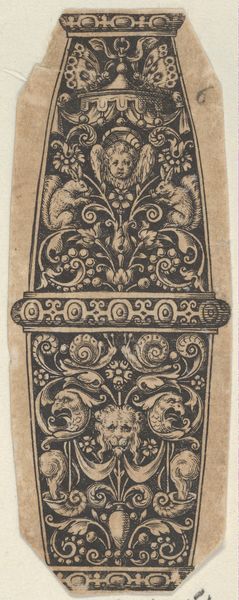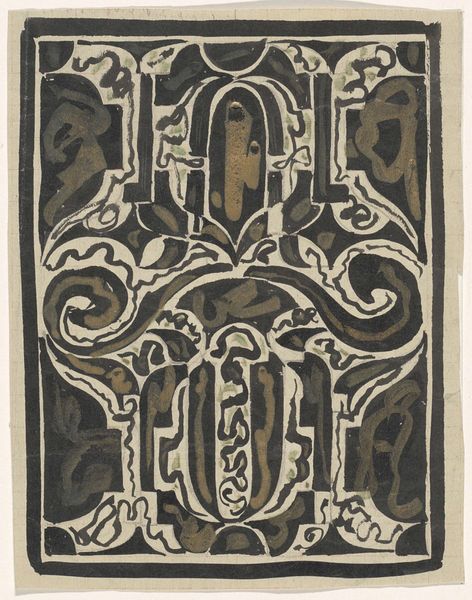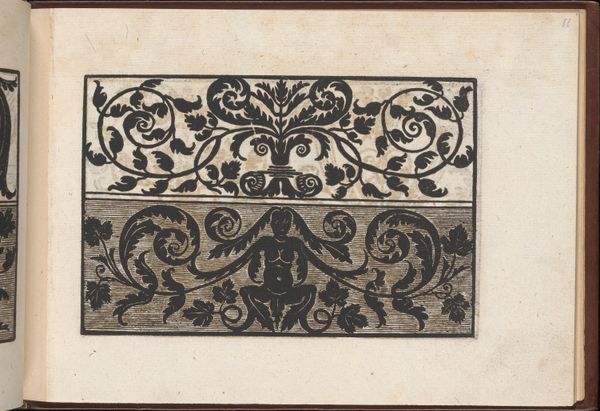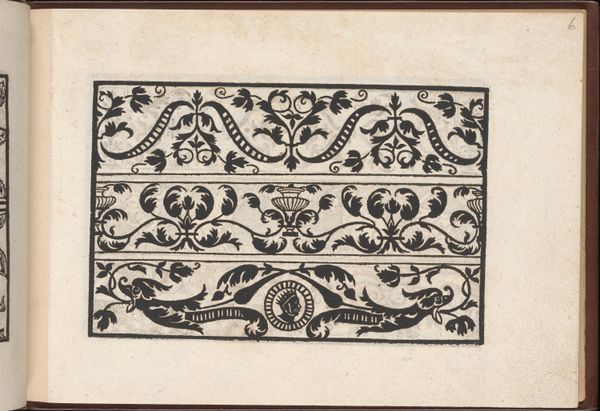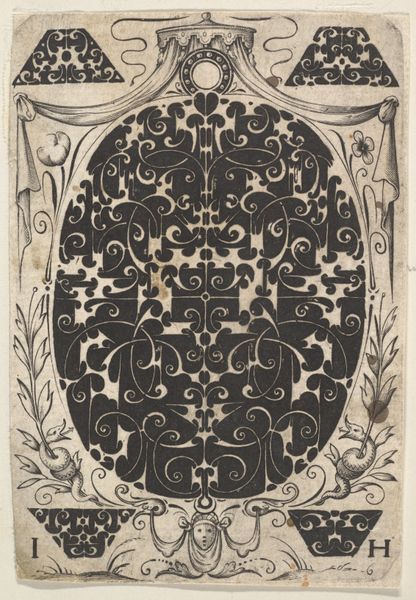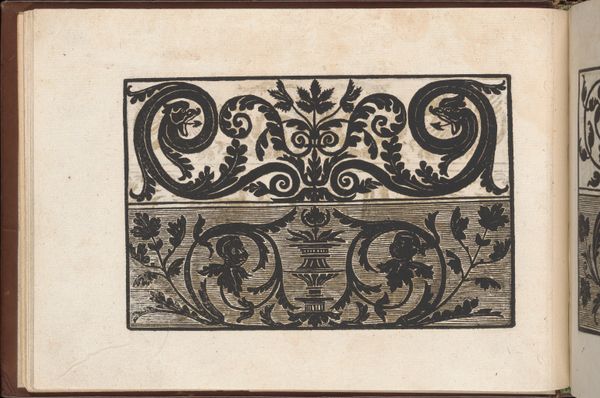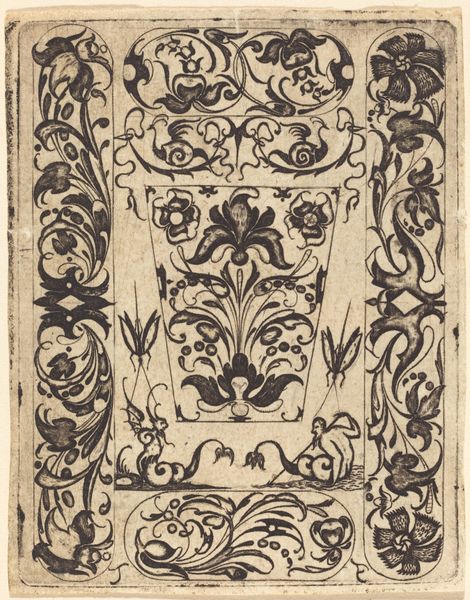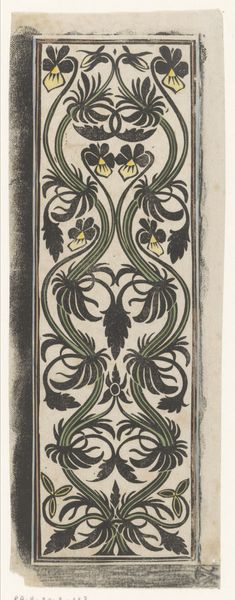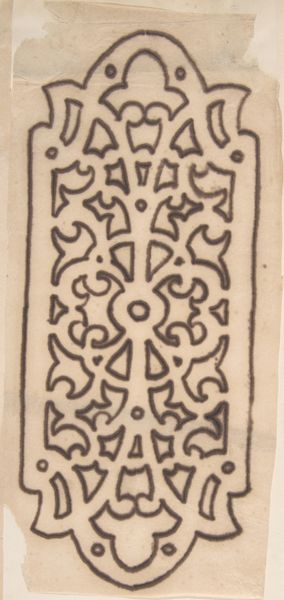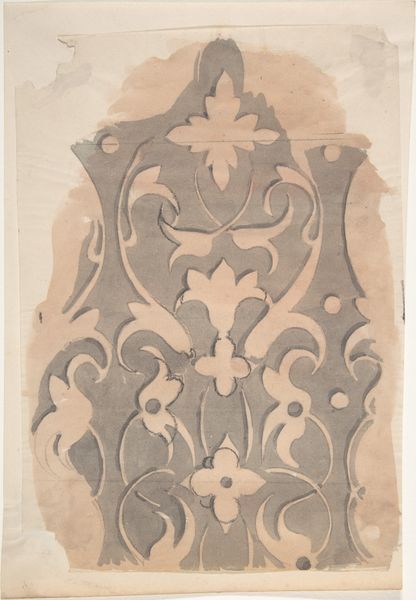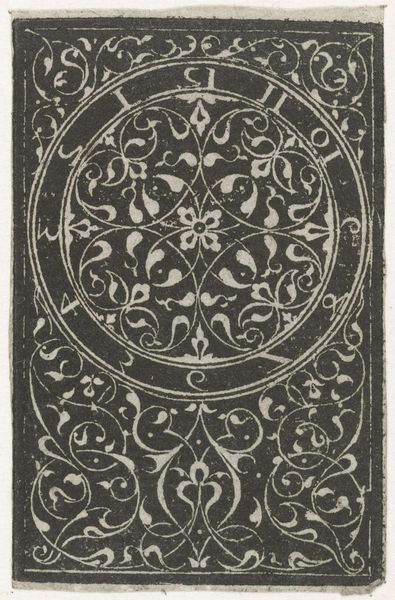
drawing, graphic-art, paper, ink
#
drawing
#
graphic-art
#
art-nouveau
#
ink painting
#
linocut
#
paper
#
ink
#
linocut print
#
geometric
#
abstraction
#
line
Copyright: Rijks Museum: Open Domain
Curator: This drawing, tentatively dated to around 1916, is titled "Ontwerp voor een omslag van een programmaboek," or "Design for a Programme Cover," currently residing here at the Rijksmuseum. It's an ink drawing on paper. Editor: My initial impression is that there is an unfinished quality—it’s interesting how the contrasting fields create distinct yet incomplete symmetrical floral motifs. Curator: Indeed. Observe the way the ink is deployed—primarily in brown and white to create the negative and positive spaces of the abstract curvilinear and geometrical design. The influence of Art Nouveau is clearly discernable in the sinuous lines, creating rhythmic, undulating patterns across the visual plane. Editor: For me, this artwork serves as a fascinating case study in the political neutrality of artistic patronage during wartime. Given its production in 1916, one can interrogate the socio-political implications of creating programme covers amidst the turmoil of the First World War. Who was it for? Was this design part of a strategy to propagate certain cultural values? Curator: I can see your point; however, isn’t it possible that its significance lies primarily in its formal qualities? Notice how the structure and composition generate meaning independent of historical narrative? Editor: Perhaps, but this raises the crucial question of for whom this structural beauty is being presented and the message such structural values transmit during particular points in history. In focusing too intensely on the design we miss the socio-economic questions which the work stimulates. Curator: I find your reading intellectually stimulating. Perhaps both interpretations, viewed together, augment a deeper understanding of the design's role as an early 20th-century artefact. Editor: Precisely. Combining different lenses grants access to more nuanced narratives. Curator: It provides a framework for considering the work from multiple angles. Editor: Absolutely, allowing us to appreciate its artistic value, yet understanding that value is intertwined with its complicated histories.
Comments
No comments
Be the first to comment and join the conversation on the ultimate creative platform.
